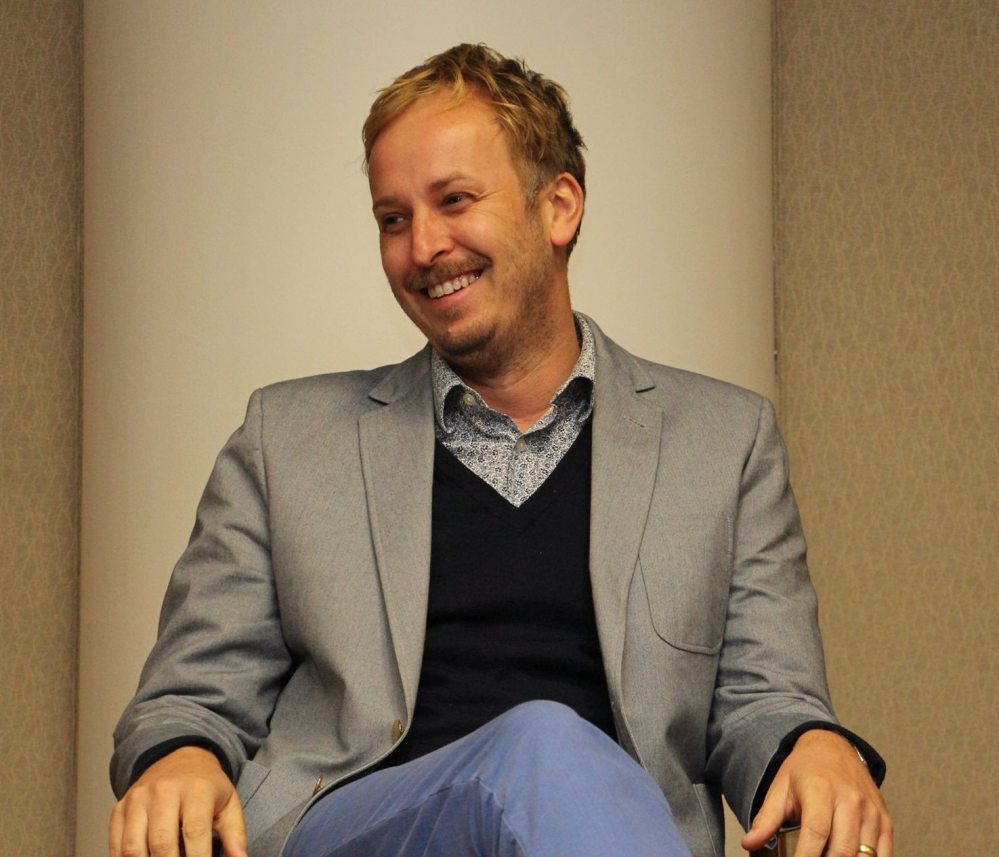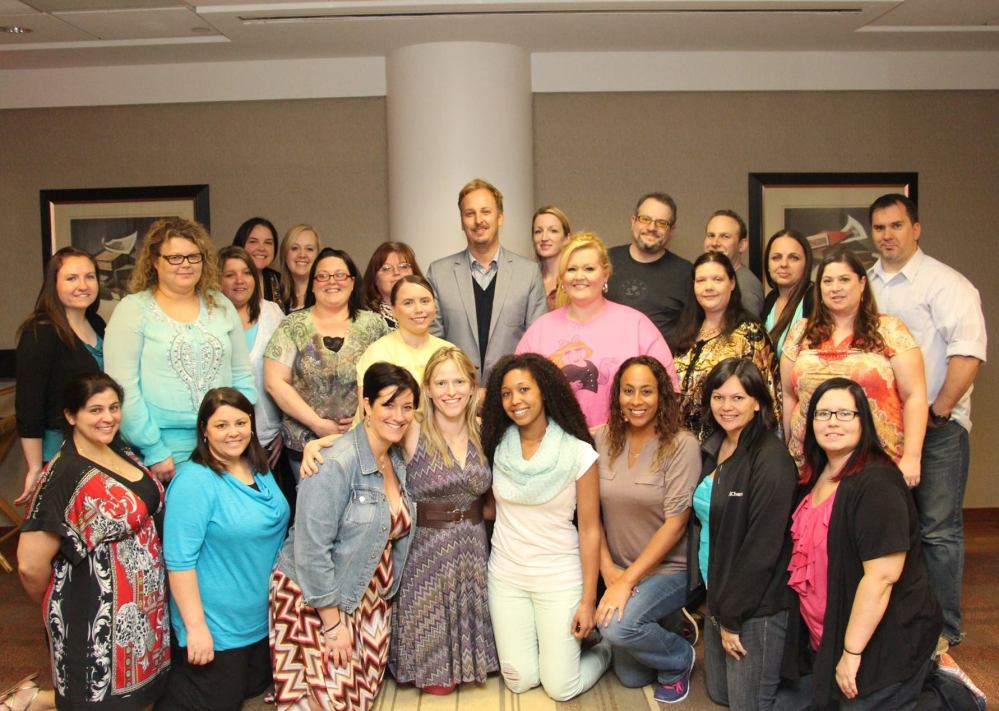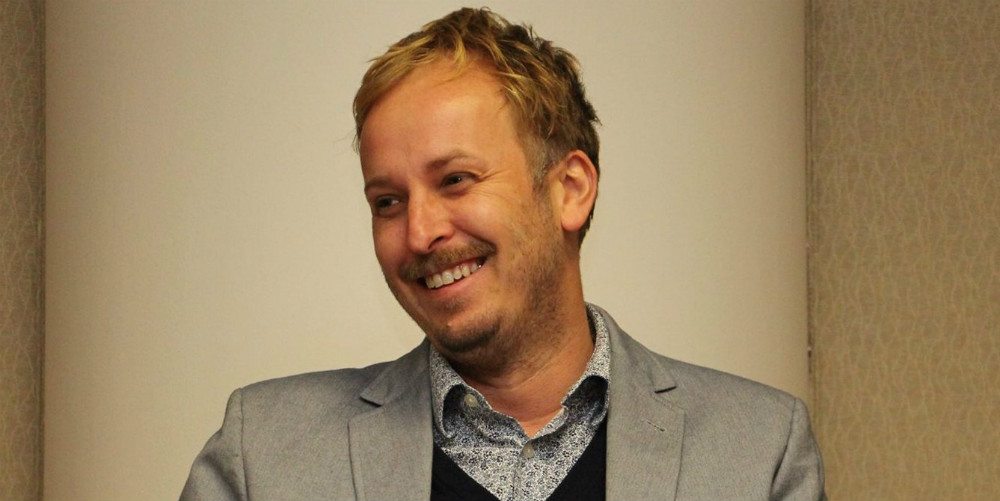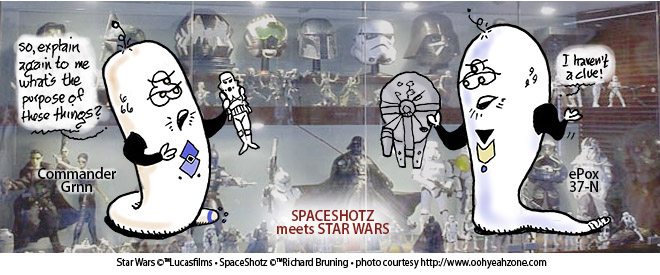
James Bobin has a job I would love to have, but one that comes with a pretty hefty responsibility . He has now directed two Muppets films, which I’m sure is a ton of fun (and work, of course – but fun work). And, as a result, he is the person chiefly responsible for carrying forward the legacy of the late, great Jim Henson. If ever there lived an irreplaceable person, Henson was one – but, if the world is to continue to have Muppets in it, someone has to take charge of it.
I wrote last week about the blogger group interview with Kermit the Frog, Miss Piggy, and Constantine about Muppets Most Wanted. As it turns out, before we talked with the Muppets themselves, we had a chance to talk with Bobin (and also song composer Bret McKenzie – come back soon for my article on him) about the challenges he had in making (and co-writing, which he didn’t do for the previous film) a sequel to his very well-received 2011 movie The Muppets.

Here are some of the best bits from the interview:
QUESTION: So while directing do you lose yourself thinking you’re only talking to the Muppets or talking to the Muppeteers?
JAMES BOBIN: [LAUGHS] Not really, no, ’cause, remember when I’m directing the stages are raised up like four foot up in the air, and usually it’s they cut a hole in the ground in front of me in which stand say 20 or 30 puppeteers and all the characters are held up. And in-between takes they had to come down, because the puppets often are very heavy, like Kermit is a sock so he’s easy to steer. But Piggy is a pretty heavy puppet, so Eric [Jacobson]’s arm just kind of wears out through time. So he can’t hold her up the entire time. So in-between takes they come down, and at that point I’d come in and say my stuff.
But sometimes, for example, like Statler and Waldorf, they’re often in the box, and I can’t see Dave [Goelz] and Steve [Whitmire] underneath so I have to at some point go, “Uh, okay, uh, can you just do that again!” [LAUGHS] Like that and to Statler and Waldorf as well, so it’s like really it’s them. So generally to puppeteers, occasionally to the puppets themselves. But I do think that what’s funny about that is in my mind I know Steve Whitmire, who plays Kermit – but I also know Kermit. He’s a different person, and that is how good Steve is at doing Kermit. You know, when I’m in my off moments I just think on what Kermit’s doing, like I just know him very well, [GROUP LAUGHS] like he’s someone I know. I mean, like he’s on my phone somewhere, he really feels that real to me.
Q: What were the differences between shooting the first movie and the second?
JB: On the first movie, I’d never worked puppets before, so it was a very big experimental learning curve of how to frame shots, how to make this world feel realistic, that these puppets were alive, breathing people who are interacting with humans. The world’s the world we live in that just happened to have puppets in it. That idea I love, and that’s a very important part of it.
I think just getting to that level for me was an achievement. I could make a movie that like worked on that level. And so for this one, I just wanted to push that a bit further. Because the last movie is kinda set in the theater for a lot of the final act. So I thought this time, well, we should just get out and about a bit more and just do some slightly more adventurous, bigger stuff. And, obviously, the fact that the movie’s kind of a caper movie with some criminal stuff in it, feels like you can do bigger action sequences. Obviously, you never want to put the words “puppet” and “action sequences” in the same sentence [LAUGHS] ’cause that is very hard. But I like the idea of trying difficult stuff.
I love both movies equally, but this film I feel like has slightly more ambition which I love about it. When you’re doing a sequel there’s all sorts of things you have to deal with. One of them is you want to try and make a different movie. You don’t want to make the same movie twice, and that’s very important.
Q: Are adult humor and children’s humor closer than we think?
JB: Yeah they are kind of different but they can be the same. I mean, we’re all big kids, really. I am, I know for sure. And so often I find things like falling over, I will find that funny forever. Tom and Jerry makes me laugh as much as my kids might laugh. And that’s always going to be the way.
Sometimes it’s useful to have a thing that works on two levels, that they like it for some reason, and we like it for a different reason. Often that’s because we’re putting clever words into the mouths of puppets and so children see a blue thing with a funny nose and white hair, which is funny, but we hear them say smart words. And I love it, that idea works for both adults and children.
Q: Muppets Most Wanted has a very international flavor. Was there any thought to stopping in Sweden for the Swedish Chef?
No, because then you’d tell he’s not Swedish. [LAUGHS] What he speaks is some weird amalgam of Jim [Henson]’s kind of rubbishy Swedish, like made-up Swedish. So obviously if [we] had him talking and then someone actually speaking real Swedish, they’d go, “Hang on a minute! That’s not the same thing.” So no, were very particular to avoid Sweden.
The locations were largely chosen because I’m a fan of those kind of old-style caper movies and they’re always in places like Monte Carlo and Berlin and Madrid. It’s a very international feel. I like the idea of Muppets going global. That to me is interesting, that it’s not just about U.S. and the U.K. But they have a global interest. And that’s really, a fun thing to me.
Q: Where did you film the movie?
JB: A good 95 percent of the film was in London. We shot on the stages at Pinewood, which is just about half an hour outside London. Even places like Berlin and Madrid are also shot in or around London, because going to Berlin with the entire Muppet cast and crew would’ve been a very expensive endeavor. London is a very historical city, and therefore has lots of different architectural styles in it. So you can kind of get a rough idea: “This looks a bit like Madrid”; “This looks a bit like Berlin.” And certainly with some added set dressing you could really feel like you’re there.
So most of the movie was shot in or around London. Which is kind of nice because The Muppet Show back in the ’70s was made in London. Not many people know that. It felt very much like a homecoming for the Muppets.
Q: What was the toughest scene you had to film?
JB: Every scene’s pretty difficult. The Muppets are not an easy thing to shoot because it’s that thing about illusion. The hardest stuff usually is when you have to go full body, as I say, which is basically when they have a whole body puppet. Most of the time, the half body’s in the bottom of the frame. But whenever you see their legs, you’ve got to make it feel very natural and organic.
Sometimes, particularly in action sequences, you can’t have the sticks and half body puppets. You gotta see his legs. So when you try and enact things involving multiple Muppets and, you know where I’m heading with this, this scene where the helicopter goes away and they grab it? That’s a very difficult thing to shoot. Because, you gotta work out where to keep that thing alive, and then how it’s gonna look real, and how they’re gonna redo this, and that was a very complex thing to shoot. That whole sequence at the end on the roof took a good two, two-and-a-half weeks, which is a long time for us.
Q: If it’s so difficult, why use puppets instead of CGI?
JB: My rule of thumb is there always has to be puppeteering involved. I never want to do a fully animated Muppet film because it feels wrong to me. You know, my daughter comes and sits and hugs Kermit, I love that idea. It’s really, really sweet but you can’t do that if he’s CG. And I feel that’s important about Muppets. They’re the last kind of bastion of puppeteering and this kind of tactile entertainment. It was really important that we keep it that way.
Q: The first movie was kind of like a comeback movie for the Muppets. What are you hoping to accomplish with this movie?
JB: Well, the last movie, it was kind of like we were in this situation where we couldn’t deal with the Muppets until kind of halfway through, because they had to get back together again, just by the nature of the movie. This time, we have all the Muppets in the very beginning. So it’s kind of slightly more Muppets-focused, I guess, which I really like about it.
I hope that means that in the future there will be many more, so I think this sets it up nicely that they can do any sort of thing, any genre and it’s, you know, and as I said, it’s the last, for me it’s the last form of this kind of entertainment. So I really hope that they keep going.
Q: Have you started on the next Muppet movie?
JB: [LAUGHS] No, too tired, sorry. I’m exhausted. Ask me again in another year’s time. I love working with these guys, and as you know they’re my heroes, so I really loved it. I would love to do more because this is really fun. I mean, I’m incredibly lucky to have this job.
Muppets Most Wanted is playing in theaters now. See my complete review of and nine things parents should know about the movie for more information.
Images: Disney.
Note: Interviewing James Bobin was part of a press junket I attended that was paid for by Disney. All opinions expressed are my own.




I’m glad he cleared up the whole Sweden thing! Though I would’ve loved to have seen the Swedish Chef trying to talk to anyone in Sweden, and having nobody there understand a word he’s saying.
Of course the Swedish Chef doesn’t speak Swedish. They established on The Muppet Show, he speaks “Mock Swedish.” They could’ve used that…